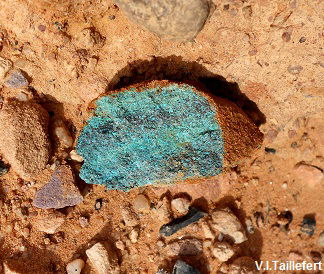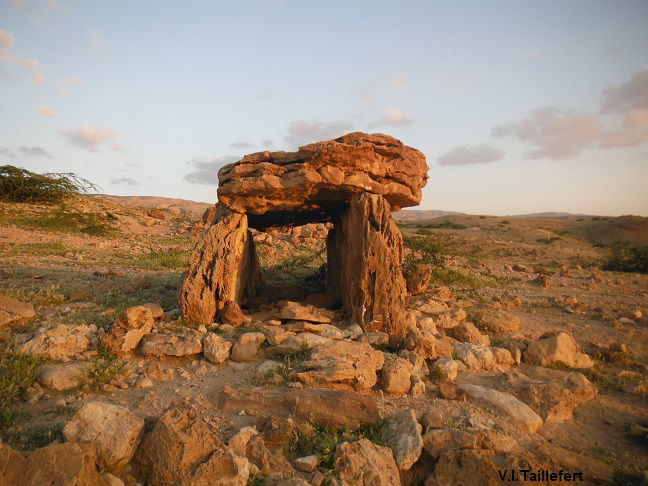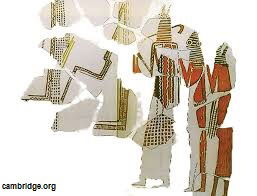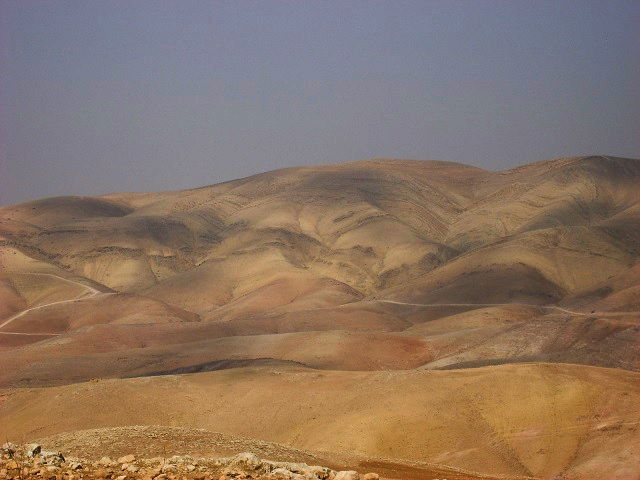
Humans in Jordan discovered how to extract copper ore around 5000 BC. At this early beginning, the extraction was not a mining activity but a surface collection. Copper was abundantly found in the Wadi Araba around Wadi Feynan and Aqaba area.
 | From 5000 to 4500 BC, villages develop in the Jordan Valley. The Chalcolithic is a transition between the Neolithic small villages of and the urban societies of the Bronze Age. The social groups start sharing their activities between the sedentary lifestyle and the nomadic pastoralism. The agriculture expands rapidly and in parallel, the manufacturing of huge storage jars, as those we found in Abu Hamid (left photo). Beside cereals and vegetable, the communities grow fruit trees, and especially the olives. We find the first evidence of the dairy products manufacturing.. | ||
The society becomes more ranked, and we see the emergence of a sacerdotal class. The rituals develop, as testified on the wall painting of Tuteilat Ghassul (photos below). This painting is the earliest known depiction of full-length human figures with decorated costumes and the earliest known scene of a ritual procession.
The deceased are no more buried in the vicinity of the dwellings, but outside of the inhabited zones: this is the emergence of the first cemeteries, which certifies of the strong increase of the population. The settlement of the human groups in villages, the agricultural development, the population increase, the pastoralism in the upper lands, all those factors contributed to the deforestation of the hillsides overlooking the Jordan Valley, which never could renew their vegetal cover since that time.
| |||
The dolmens are the only preserved remains of this period, but heavily threatened. Jordan has many dolmens, located on a line extending from North to South. They integrate in a wider network expanding from Turkey till Yemen. Dating the dolmen is difficult, but we estimate roughly that the oldest dolmens date back to the Chalcolithic and seem to be used till the end of the Bronze Age at least.

The dolmens are tombs or ritual places. One hypothesis says that may have been built by nomadic groups coming on regular basis from the eastern steppes to the greener and more inhabited areas, for burying their deceased, performing rituals and probably exchange goods with the villagers. However, recent studies underline the relation between dolmen and villages, which suppose that those monuments were linked to the settled communities. We can still see today some beautiful dolmens, especially in Madaba and Ma’in areas. Unfortunately, they are seriously threatened by the human activity.


